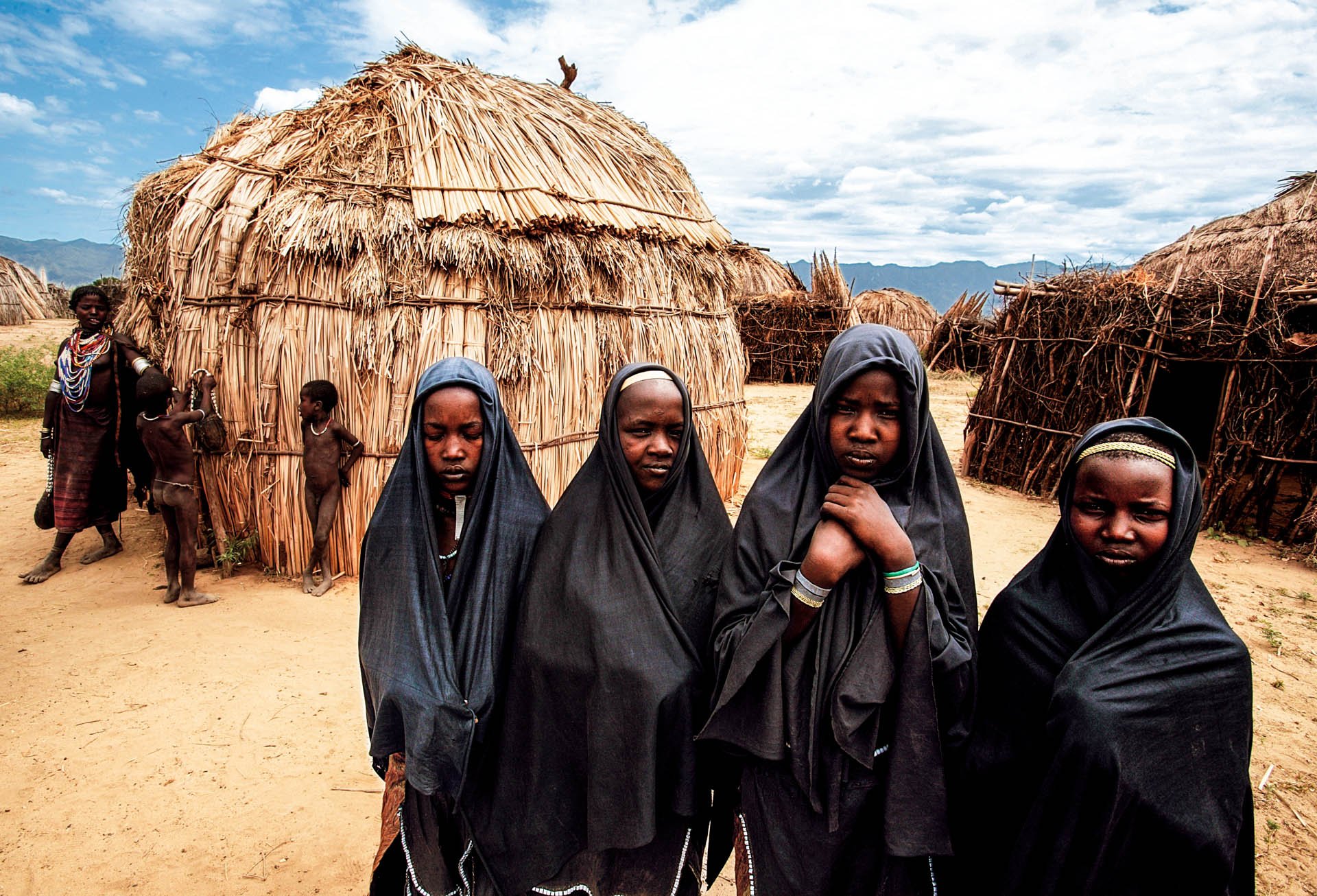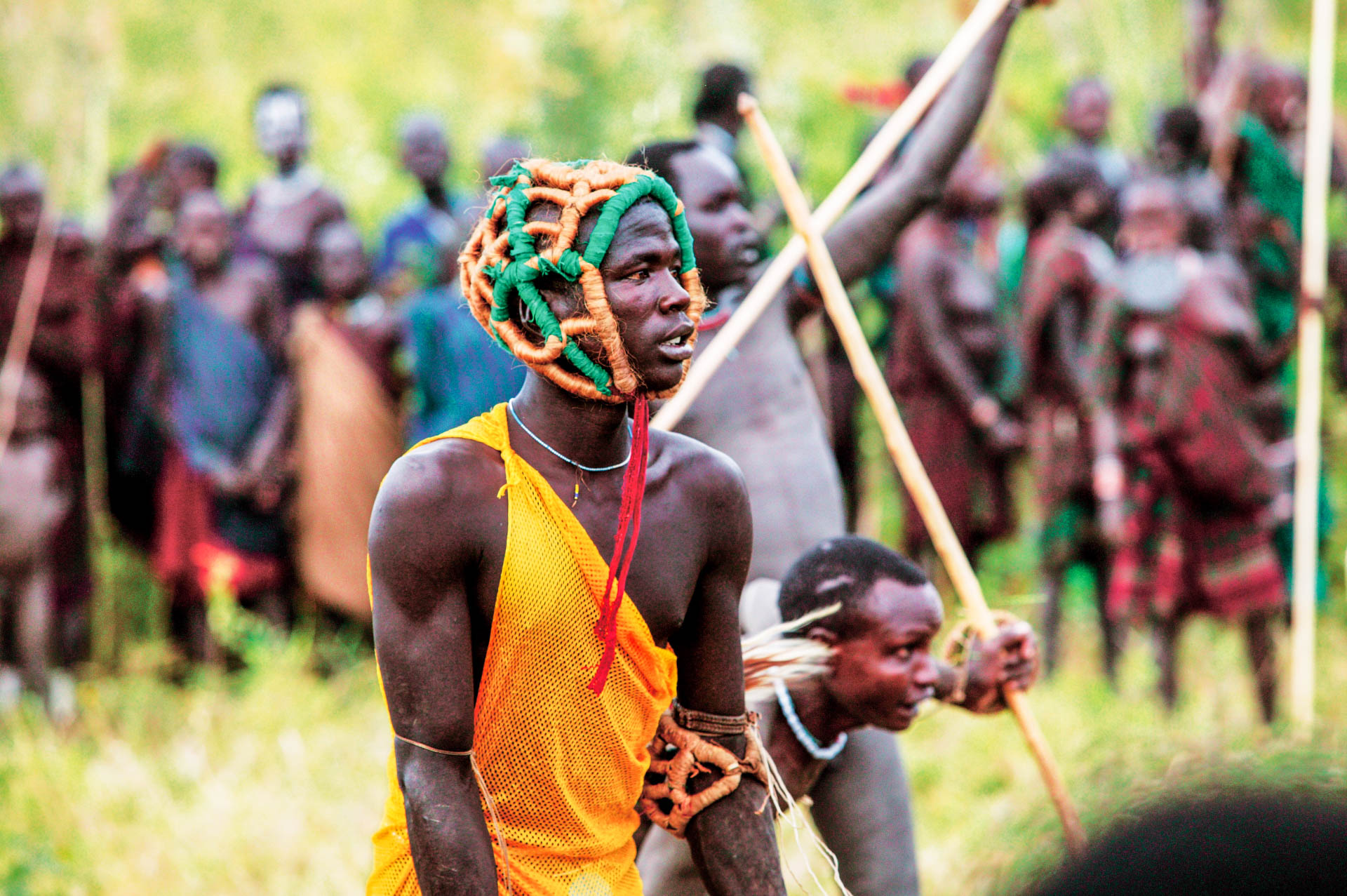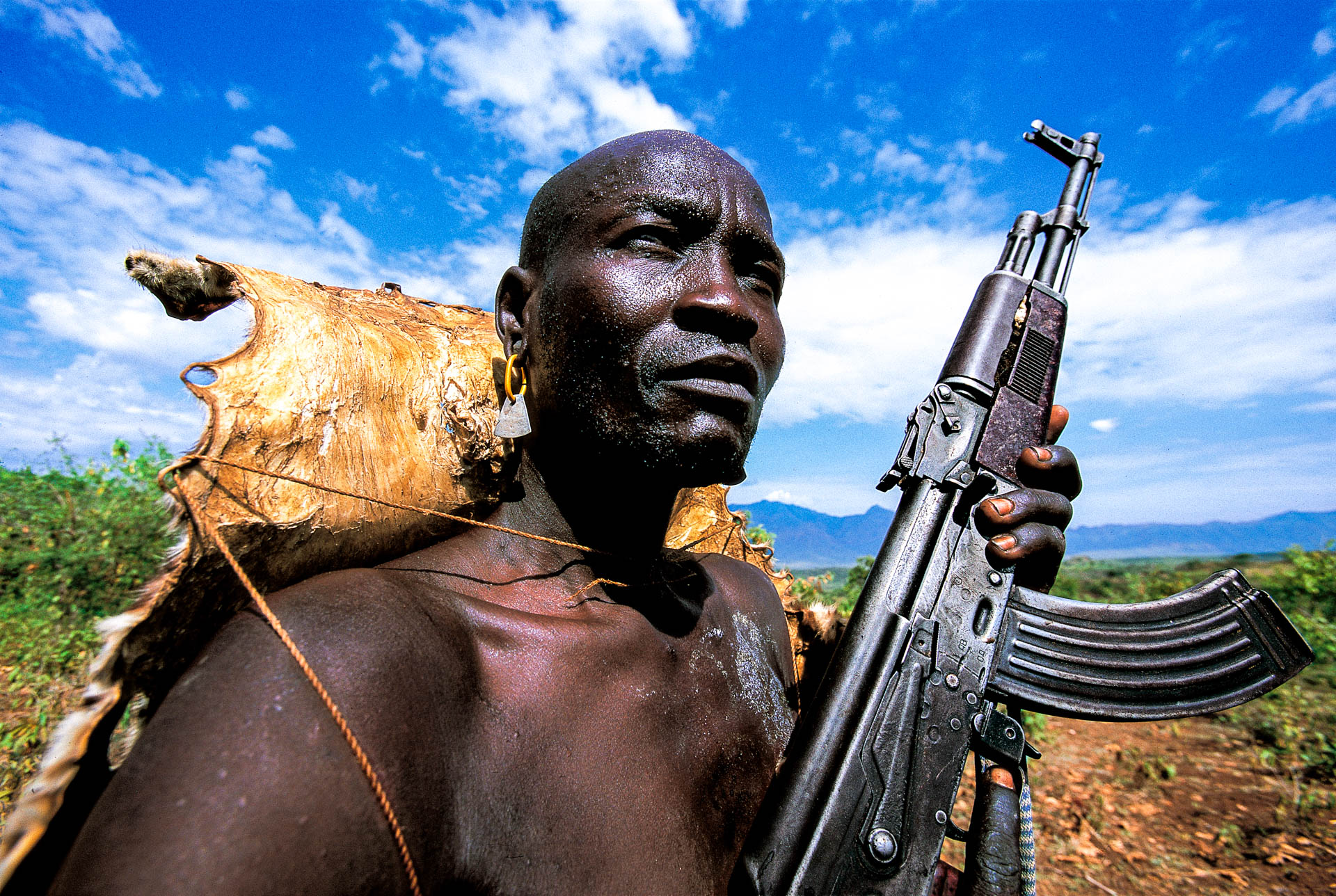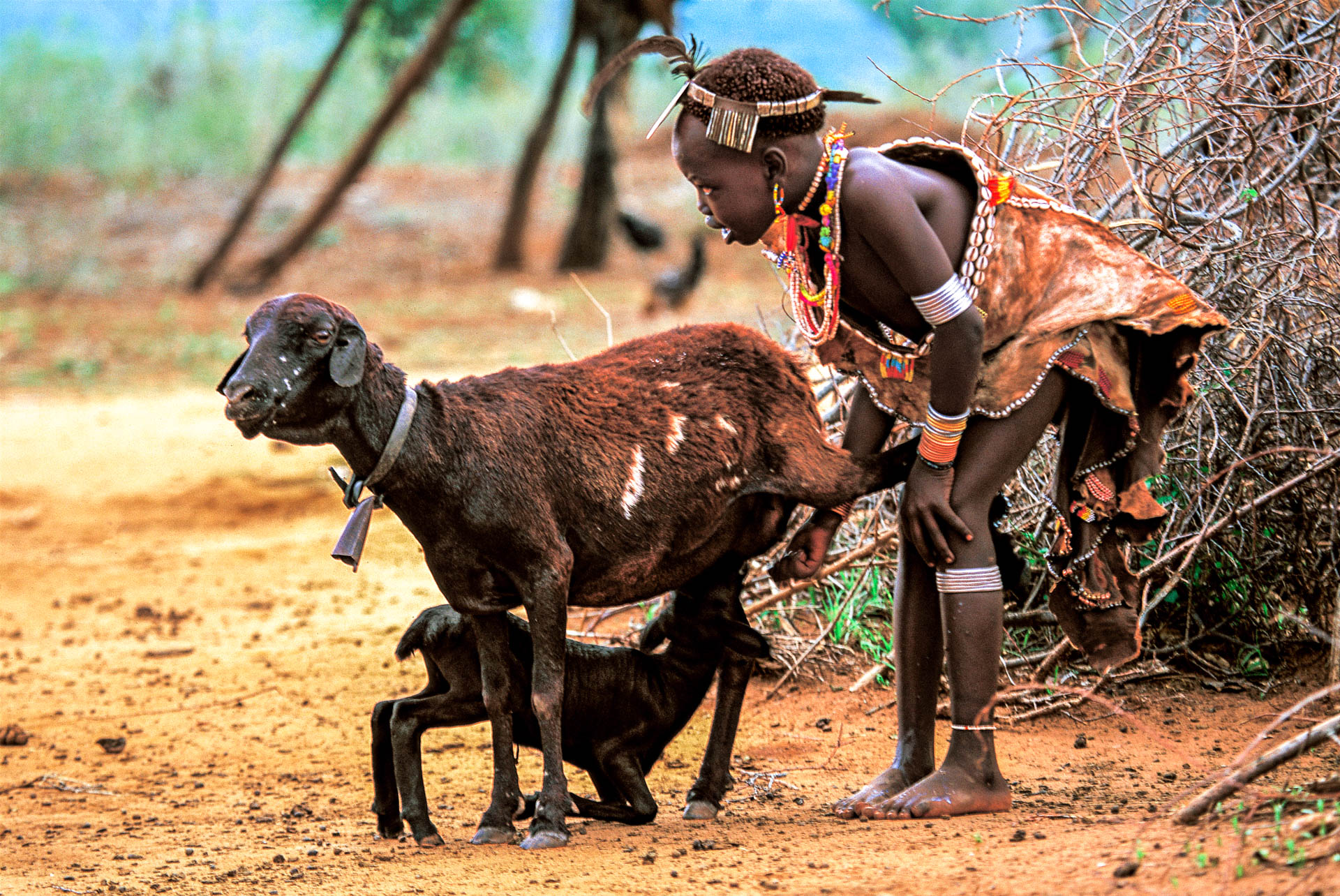
Vanishing Africa
This book represents months of work of planning and in the field, but above all it is a tribute to the eternal beauty of Africa; the photographs and text 'steal' from the peoples of the Omo a fragment of their mystery and truth. But with delicacy and respect.

Zeri is staring into the distance: she gave birth only a few hours ago.

Fatigued by her heavy load, a girl stops to rest on the road leading to the market.

The Iwangadi -or Dance of the Night- is a courtship ritual of Benna.

The Iwangadi -or Dance of the Night- is a courtship ritual of Benna.

A young Mursi girl from Komba smiles timidly at the camera.

The Mursi are very curious: this child can't resist the temptation of looking through the camera.

Barghy: the innocence and beauty of a young Hamer girl.

Galeb: the lake people.

Often wrapped in long veils, Erbore women seem to take on mysterious appearance of Muslim women.

A group of Konso youths return to the village with heavy faggots of wood on their backs.

The Donga: one of the contenders gets ready for the duel.

According to an ancient custom, the domed huts of the Mursi village of Komba lie together in a clearing protected by a hedge.

The beauty of the Karo women also consist of color and pain.
.

Welè Ghida, hunter from Kormu.

At Rate the children find shade in the huts.

The Surma village of Kormu at dawn, about thirty domed huts.

A group of warriors armed with Kalashnikovs on a huge tree at the edge of the village of Komba.

A girl from Arna is about to milk a goat.

For the children, every aspect of village life is experienced in a sort of wild freedom, as they live together with the grazing animals they look after.

The shadow of the Cessna looms, over the Galeb village of Omorate, strings the curiosity of the villagers.

Karo region: the young women are usually entrusted with caring for the elderly members of their group.

Two men lead two salt-laden donkeys along the path. The El Sod crater is the largest salt deposit in Ethiopia.

A Surma child, whose face is painted yellow, poses for the photographer.

Ghere Kara, the village expert, meticulously paints a child's face using a cartridge case as a brush.

Kalashikovs, shoulder belts and colored fabrics are the usual 'outfit' of the Karo man.

After an incision has been made in the cow's neck with an arrow, its blood is tapped and is drunk by everyone.

The Blood meal is one of the propitiatory rituals of the Surma, a tribe of farmers and livestock breeders who entrust their hopes for survival to their animals.

Wearing a sort of waistcoat and cloth headdresses, and holding their poles, these young warriors are ready to begin a Donga combat.

A group of women standing on the promontory close to their village.